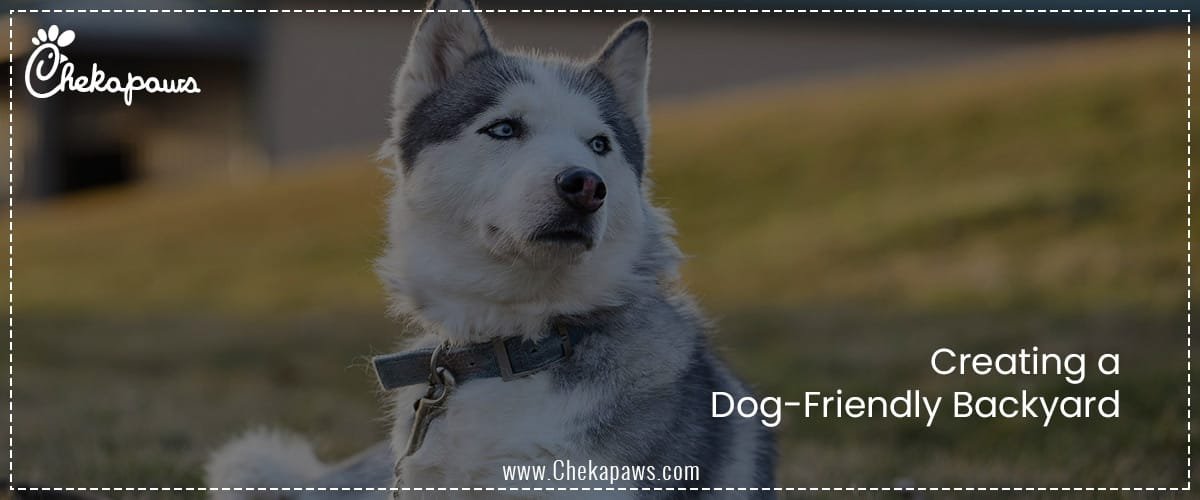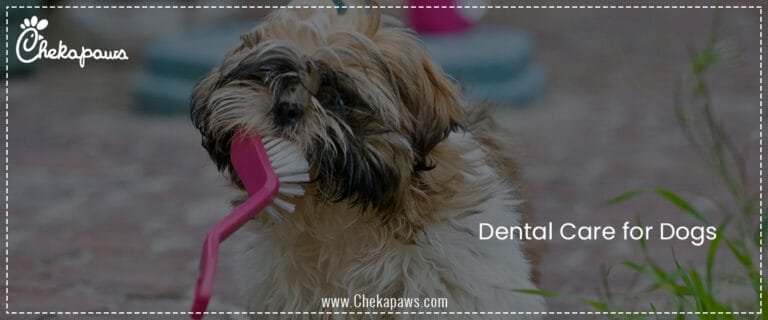As a pet parent, I am aware of More than just a piece of grass, the backyard serves as a dog’s personal playroom, exercise space, exploring area, and even preferred site for sunbathing for many dog owners. A well planned dog-friendly backyard keeps your pet safe from dangers, emotionally engaged, and physically active.
Whether you have a lively young Labrador with endless energy, a dignified elderly Golden Retriever who likes to relax, or an inquisitive Beagle who loves sniffing every corner, your backyard may be a pup’s heaven when it is carefully prepared.
Creating a dog-friendly backyard involves striking a balance between enjoyment, utility, and safety, from safe plantings and enrichment features to secure fencing and shaded rest areas. Everything you need to know to establish a dog’s outdoor sanctuary is covered in detail in this tutorial.
Table of Contents

Understanding Your Dog’s Backyard Needs
The breed, age, size, temperament, and health requirements of your dog should all be taken into account before you begin purchasing dog-friendly landscaping supplies or creating agility courses.
Breed-Specific Needs
Breeds used for herding, such as Australian Shepherds and Border Collies: Large, open areas are necessary for games like frisbee and retrieve as well as running.
Because they may follow their noses, dogs (such as Beagles and Basset Hounds) enjoy scent games, sniffing routes, and safe fencing.
Breeds of toys (such as Maltese and Chihuahuas): To avoid harm, they require safe surfaces and protected, shaded areas.
Breeds that enjoy the water, such as Portuguese Water Dogs and Labrador Retrievers: may like a splash pool that is dog-safe.
Breeds of giants, such as mastiffs and great dane: need soft surfaces, shade, and strong structures to maintain joint health.
Age Considerations
- Puppies: Require tiny, shady play areas, non-toxic items, and chew-safe plants.
- Digging areas, agility elements, and exercise spaces are beneficial for adult dogs.
- Senior dogs: Need ramps, non-slip surfaces, and convenient access to water and rest spots.
Temperament and Energy Levels
The design of your backyard will depend on your dog’s personality
- Energetic: Incorporate elements that encourage a lot of movement, such as agility equipment, tunnels, and fetch zones.
- Timid: Offer hiding places, peaceful nooks, and a slow introduction to novel aspects.
- Social: Provide an area for dog playdates; for added security, consider a double-gated entrance.
Safety First: Fencing and Boundaries
First and foremost, a dog-friendly backyard needs to be a secure area. Even the most exquisitely designed garden might turn harmful if there are improper limits.
Selecting the Appropriate Fence Height
- Small breeds: Standing at least four feet tall.
- Medium to giant breeds: at least 5 to 6 feet.
- Climbers and jumpers: Take into account extended height or angled tops.
Material Options
- Wood: A strong barrier and good privacy.
- Chain link: Cost-effective but might enable climbing.
- Vinyl is chew-resistant and requires little upkeep.
- Metal panels are robust and fashionable.
Preventing Dig-Out Escapes
Dogs may attempt to burrow beneath fences.
- Along the fence line, bury hardware cloth or chicken wire 12 to 18 inches underground.
- Place concrete footers or paver stones beneath the fence.
Gates and Safety Locks
Put in dog-proof, self-closing gates. Think about:
- A double-gate mechanism to prevent escape.
- Locks with keys or latches that are higher than a dog can reach.
Landscaping with Dogs in Mind
Your backyard design should be both aesthetically pleasing to you and practical and safe for your dog.
Plants Safe for Dogs
Certain common garden plants, such as oleander, lilies, and azaleas, are poisonous to dogs. Select secure options.
- Sunflowers
- Marigolds
- Roses (free of dangerous pesticides)
- Snapdragons
- The Zinnias
Avoiding Toxic Plants
Avoid
- Sago palm
- Foxglove
- Daffodils
- Tulips
- Aloe vera (mildly toxic to dogs)
Chemical-Free Lawn Maintenance
Make use of fertilizers that are safe for pets, such as seaweed-based and organic compost.
Avoid pesticides and herbicides that are harmful to pets.
Establishing Dog Routes
Dogs frequently scuff their favorite routes or the paths near fences. Rather than resisting it
- In certain areas, use mulch, pavers, or pea gravel.
- Make deliberate loops for exploration and sniffing.
Providing Shade and Shelter
Shade is essential since dogs heat up more quickly than people.
Natural Shade
- Mature trees
- Bushes for cool hideouts
- Pergolas with climbing plants
Artificial Shade
- Shade sails
- Canopies or umbrellas
- Dog-specific cabanas
Protection from the Weather
Add a covered space or doghouse to provide shelter from the wind and rain. Select:
- Insulated doghouses for colder climates.
- designs with ventilation for hot climates.
Outdoor Comfort: Surfaces and Ground Cover
Grass Solutions
- Bermuda grass requires full sun but is hardy.
- Bluegrass from Kentucky: Soft but requires care.
- Artificial turf might get heated, but it’s low maintenance and has superb drainage.
Grass Substitutes
- Pea gravel: Beneficial for drainage, but sensitive paws may find it uncomfortable.
- Select pine or cedar mulch instead of cocoa mulch, which is poisonous to dogs.
- Rubber matting: Excellent for agility and play areas.
Enrichment Features and Play Zones
Your dog should be able to engage both mentally and physically in the backyard.
Digging Pits
- Establish a special digging area if your dog enjoys digging:
- Fill with loose soil or sand.
- For treasure hunts, bury toys.
Equipment for Agility
- Tunnels
- Barriers
- Beams for balance
Water Fun
- Pools for children
- Splash fountains for dogs
- Artificially created shallow streams
Fragrant Gardens – For enjoyable sniffing, plant herbs like lavender, basil, and rosemary.
Important Backyard Features
- A fresh water station that is always open and protected from the sun.
- Waste Disposal System: Dog waste can be composted or placed in a covered bin.
- Storage: Toys and grooming supplies in weatherproof bins.
Lighting for Safety in the Evening
- To improve visibility, use solar path lights.
- floodlights that turn on in response to motion for safety.
- To keep dogs from being startled, use soft ambient lighting.
Seasonal Care and Maintenance
Summer Day Care
- Continuous hydration and shade.
- Avoid heated surfaces during the day.
Winter Care
- Give a nice place to stay.
- Use ice melts suitable for pets.
Cleanliness Throughout the Year – Check frequently for dangers such as poisonous plants, rubbish, or sharp objects.
Training and Backyard Manners
Your dog ought to be aware of
- Training at boundaries
- Command recall
- Garden beds should not be dug up.
- Calm welcome at the gates
Conclusion
More than just a place to keep your dog safe, a dog-friendly backyard is a reflection of your relationship with your pet. You can design a backyard where your dog may play, unwind, and flourish all year long by fusing comfort, safety features, and entertaining play areas.
Every modification you make, whether you’re beginning from scratch or re modelling your current area, will make your dog’s life happier and more fulfilling and provide you comfort in knowing they have a secure outside retreat.








